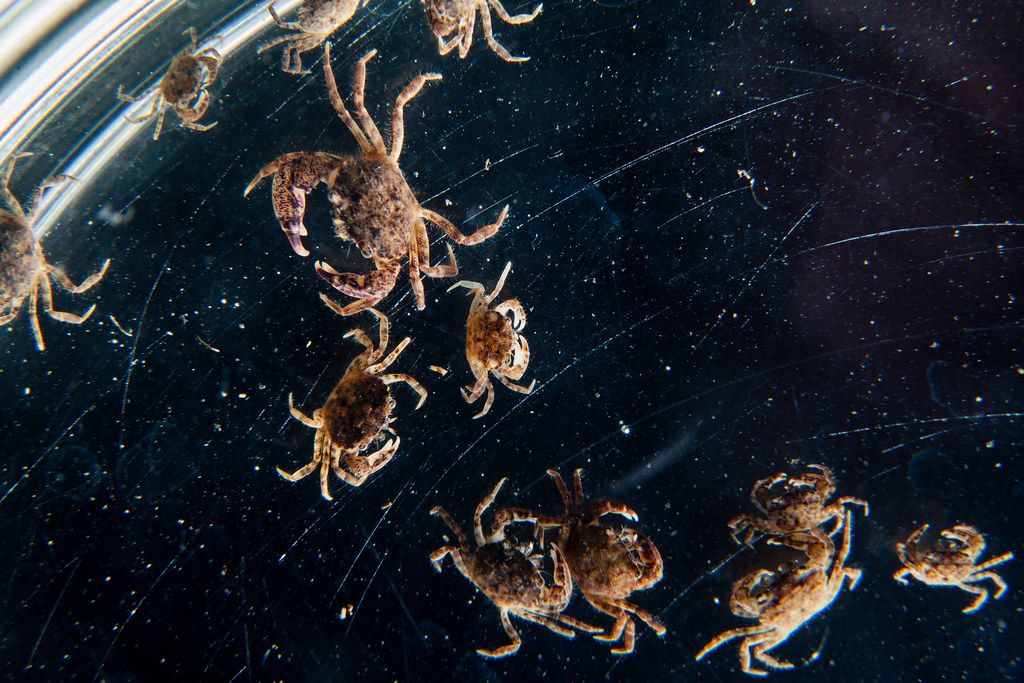Black-Fingered Mud Crab
Panopeus herbstii
Also known as the Atlantic mud crab, the black-fingered mud crab is muddy brown in color with stout, black-tipped claws. It can be found on oyster reefs and along the muddy bottoms of marshes.
This section shows one large critter image at a time. Use the thumbnails that follow to select a specific image to display here.

This gallery contains a grid of small thumbnails. Selecting a thumbnail will change the main image in the preceding section.
Appearance
Black-fingered mud crabs are muddy brown in color, with stout, black-tipped claws that are unequal in size. A large tooth on the finger of its larger claw is visible when the claw is clamped shut. Its four pairs of walking legs are hairy and slender. These crabs grow to reach three-quarters of an inch wide and one and a half inches long.
Feeding
Mud crabs use their strong claws to crack the shells of oysters, barnacles and marsh periwinkles, and can also be found feeding on worms, fish and other crabs.
Predators
Predators include birds, fish and large crustaceans.
Reproduction and life cycle
Mud crabs reach sexual maturity between 18 and 24 months of age. Females carry fertilized eggs on abdomen until they hatch. Larvae hatch with undeveloped limbs and float through the water like plankton. Larvae molt four times over the course of 12 to 15 days before developing fully functional claws. A few weeks later, the larva (also known as megalopa) will settle into the sea floor and molt into a juvenile crab.
Did you know?
- The black-fingered mud crab is the largest of five species of mud crabs found in the Chesapeake Bay. Other species include the white-fingered mud crab, flat mud crab, equal-clawed mud crab and grooved-wristed mud crab
- A top predator of the marsh periwinkle, black-fingered mud crabs help keep snail populations in check that could otherwise destroy large amounts of wetland vegetation.
- The black-fingered mud crab can often be found under stones and shells or among masses of sponges and seaweed and also find protection inside bottles, cans and other trash.
Sources and additional information
- Life in the Chesapeake Bay by Alice Jane Lippson and Robert L. Lippson
- Atlantic Mud Crab - South Carolina Department of Natural Resources
- Black-Fingered Mud Crab - The Uncommon Guide to Common Life on Narragansett Bay
